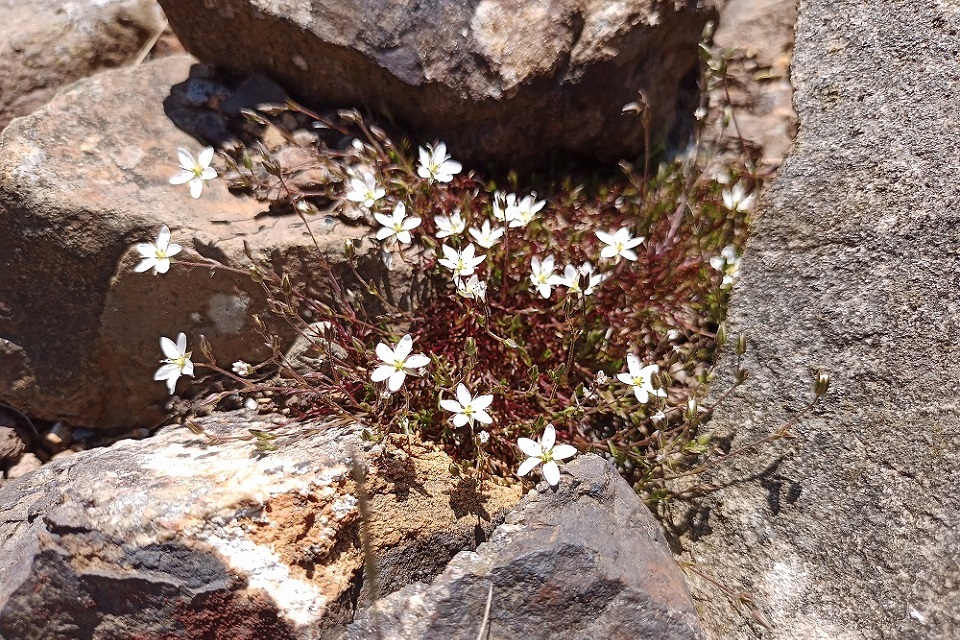Next phase of work to reduce metal mine pollution due to start
Work to limit heavy metals polluting rivers in Upper Teesdale is due to start next week

The vegetation plots from the pilot last year. Credit: Yorkshire Dales Rivers Trust.
The next phase of an innovative project to limit heavy metals polluting rivers in Upper Teesdale starts next week following a successful trial.
The work to create 2 hectares of vegetation plots above Middleton-in-Teesdale will limit heavy metals being washed out of abandoned mine sites next to Eggleshope Beck and Marl Beck, both tributaries of the River Tees.
By encouraging new plants to grow, less rain water will filter through into the mine waste, reducing erosion and the amount of heavy metals washed into the becks.
It will also bring a boost to biodiversity by the creation of rare calaminarian grassland habitats – the unusual metal tolerant plants that are distinctive to the North Pennines.
The project is an extension of the successful pilot vegetation establishment work which took place at the end of last year across the former mine sites, with work starting next week and continuing throughout the summer.
This will support meeting the government’s Environment Act target to halve the length of rivers polluted by harmful metals from abandoned metal mines by 2038 and improve the water quality in the Tees catchment.

Calaminarian plant - spring sandwort. Credit: Yorkshire Dales Rivers Trust.
Improves water quality and biodiversity
Dr Hugh Potter, Environment Agency Water and Abandoned Metal Mines (WAMM) programme lead, said:
This innovative work to create vegetation plots will not only limit the amount of metals being washed out of mine wastes into rivers, improving water quality, but it will enhance biodiversity.
About 200km of rivers in Teesdale and Swaledale are polluted by metals released from long-abandoned metal mines. These interventions will help us achieve the Environment Act target to halve the length of rivers polluted by abandoned metal mines and bring real environmental benefits.
Chris Newton, Coal Authority Principal Programme Manager, added:
Building on last year’s successful pilot, we are excited to begin the next phase in Middleton-in-Teesdale. These vegetation plots will help reduce heavy metal pollution in our rivers, protect watercourses, and boost biodiversity by creating rare calaminarian glassland habitats.
Britain has a significant metal mining history and we look forward to this work improving the water quality in the Tees catchment as well as contribute to the Environment Act target approved by Parliament.
Collaborative efforts
Tim Longstaff, Yorkshire Dales Rivers Trust Project Manager, said:
Carrying out this innovative vegetation establishment on toxic mine wastes will help improve water quality and biodiversity in Teesdale for both wildlife and people.
It is an exciting project which could not have come about without the collaboration of so many organisations and people including the local landowners and farmers.
While metal mines played a major part in Britain’s history, water draining from abandoned mines, and the contaminated wastes left at the surface, continue to pollute our rivers and harm aquatic life.
The work is being delivered as part of the North Pennines National Landscape Tees Swale: Naturally Connected programme, which aims to restore, expand and connect habitats and is funded primarily by The National Lottery Heritage Fund (NLHF).
It’s led by the Yorkshire Dales Rivers Trust and the Water and Abandoned Metal Mines (WAMM) programme, working with the Tees Rivers Trust. Match funding is from the WAMM programme, a partnership between the Environment Agency, the Coal Authority and the Department for Environment, Food and Rural Affairs (Defra).